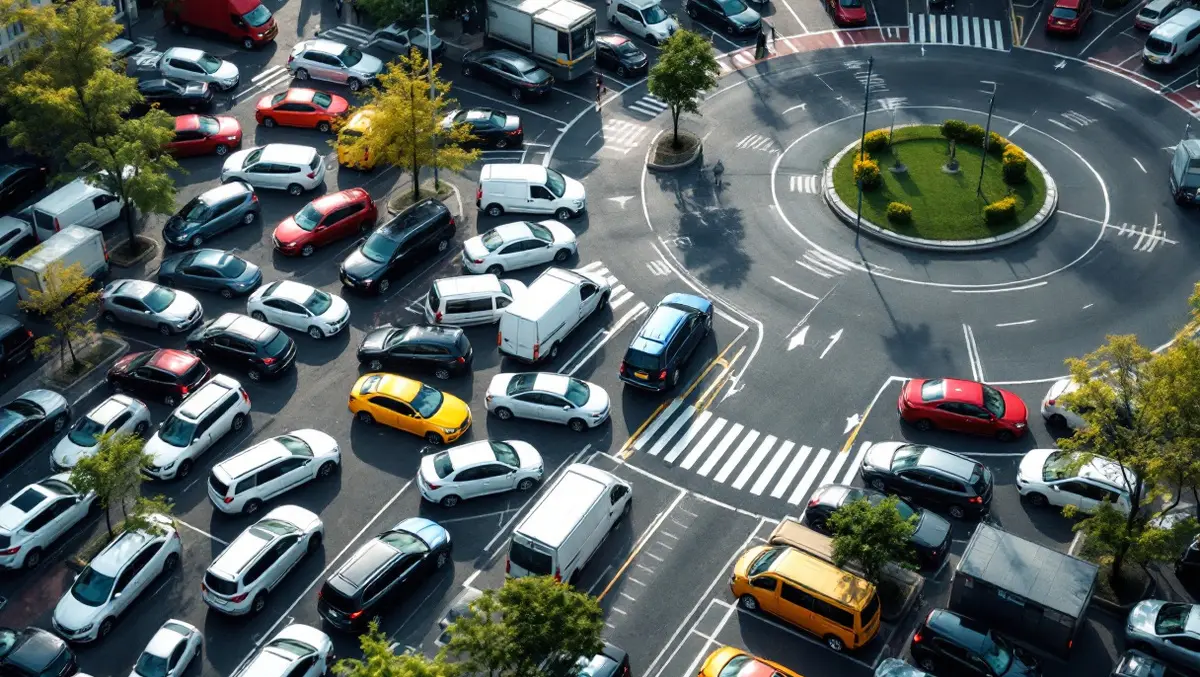
Study reveals car parks riskier than roundabouts for accidents
Australian drivers are more than three times as likely to be involved in a crash in a car park compared to a roundabout, according to a recent study by Right2Drive.
Right2Drive analysed internal data from 14,052 reported non-fatal accidents nationwide over the past year. The analysis reveals that car parks accounted for 17.4% of total accident reports, making them riskier than intersections (10.3%) and roundabouts (5.3%).
The data shows that rear-end collisions are the most frequent type of accident, comprising 33.4% of all reported incidents. Most road accidents in Australia are reported when vehicles are stationary, with common scenarios including collisions involving unattended parked vehicles.
Nicolas Rio, Projects and Technology General Manager at Right2Drive, commented on the findings: "At Right2Drive, we see firsthand the impact accidents have on drivers. Through this analysis, we can better understand the leading causes of road collisions and identify the key areas where accidents are becoming more prominent and raise awareness for drivers to have preventive measures in place.
"We have identified that single-lane roads, multi-lane roads and car parks are taking the lead as the riskiest spots, compared to more commonly known dangerous areas like roundabouts and intersections," said Rio. "Not only does the study highlight a greater need to support Australian motorists when it comes to delivering effective road safety measures to reduce these accidents, but also in making sure that drivers can easily get back on the road after being involved in a not-at-fault accident by understanding their legal rights."
Single-lane roads were identified as the riskiest location for a collision, accounting for 23.4% of reported non-fatal accidents in 2024. According to the report, these roads, often found in rural or country areas, are typically narrower and have higher speed limits, increasing the risk to drivers, particularly at sharp turns or where visibility is limited by blind spots.
Multi-lane roads were the second most common setting for road accidents, with 20.6% of incidents occurring there. These roads experience higher traffic volumes and varying vehicle speeds, which the report suggests increases unpredictability and requires drivers to be more vigilant.
Car parks, the third most accident-prone setting, made up 17.4% of reported crashes. The data indicates that car parks can be particularly hazardous due to increased pedestrian activity and confined spaces caused by parked vehicles.
Rear-end collisions continue to be the predominant type of non-fatal road accident, accounting for more than a third of all such incidents. Causes include abrupt stops, distracted driving, and tailgating, according to the analysis. The likelihood of being involved in a rear-end collision is estimated at three times that of being hit while stationary.
Crashes involving stationary vehicles are the second most frequently reported type of accident, comprising 11.7%. The report notes these incidents are more common in locations with congestion such as car parks and during periods of increased traffic, or where driver reaction times are slow.
Unattended parked vehicles also represent a notable proportion of accidents, affecting 11.5% of the drivers in the dataset, followed by cars in a parked position (9.9%) and incidents occurring when merging lanes (8.1%).
According to a survey by Right2Drive, 74% of Australian drivers are unaware of their rights following a not-at-fault accident. Blake Parker, Right2Drive's General Manager, offered advice to those involved in such incidents:
1 - Not-at-fault drivers are entitled to a like-for-like replacement vehicle
If you're involved in a not-at-fault car accident, the at-fault driver or their insurer is responsible for covering the cost to restore you to the position you were in pre-accident. This can include covering the cost of towing, repairs and an accident replacement car for the duration of the repair. This is the same case even if you don't have your own car insurance policy.
In the event of a total loss, you are also entitled to keep the replacement vehicle until you receive a settlement."
2 - Stop immediately and exchange information with the other party involved
If you've been involved in any kind of car accident, you need to stop immediately and offer assistance if you can. Exchanging information with the other driver involved is an important step after the accident, as it impacts your insurance claim and eligibility for a replacement vehicle. If the other driver is unwilling to cooperate, you are within your rights to call the police for assistance."
3 - Collect as much evidence of the accident
Make sure to collect as much information and evidence as possible from the accident scene in the form of photos, videos and witness statements. Being able to prove you are not at fault is important for liability and claiming after a car accident."
The data was gathered by Right2Drive to identify trends and inform both drivers and policymakers about the current landscape of non-fatal road accidents across Australia.


